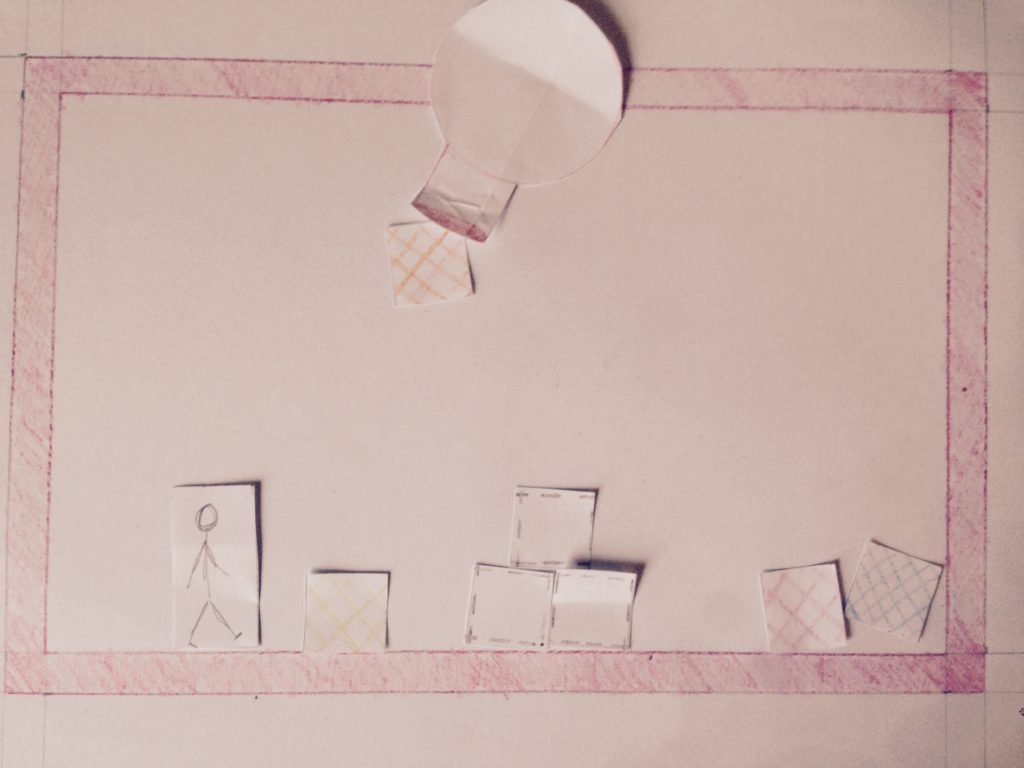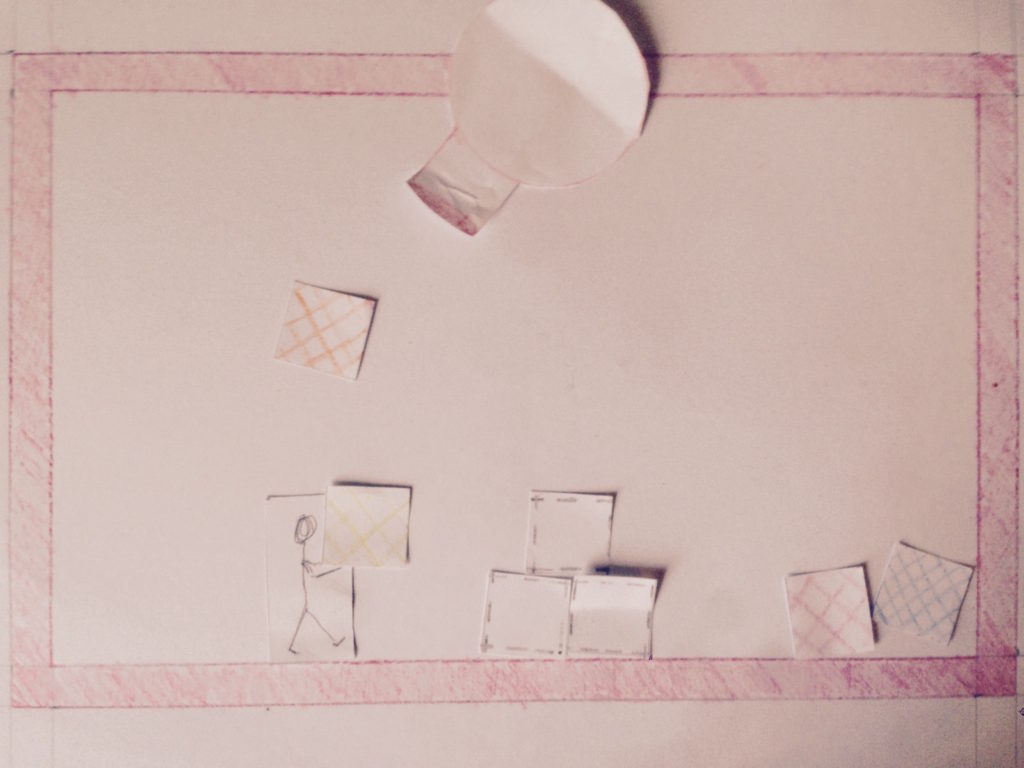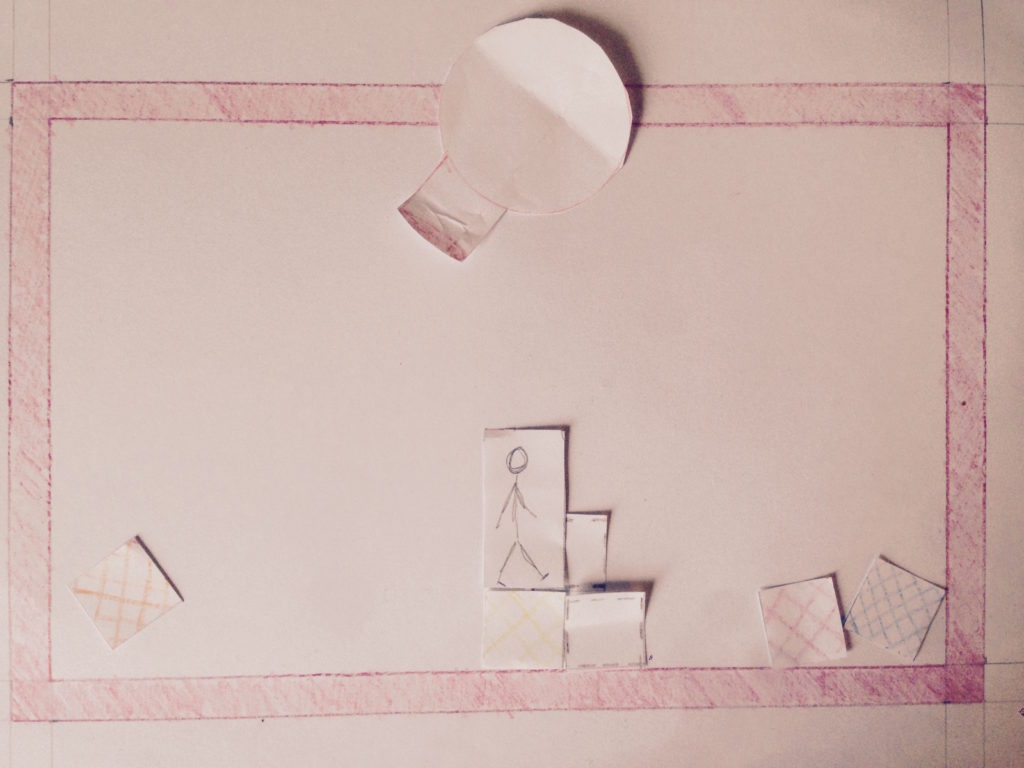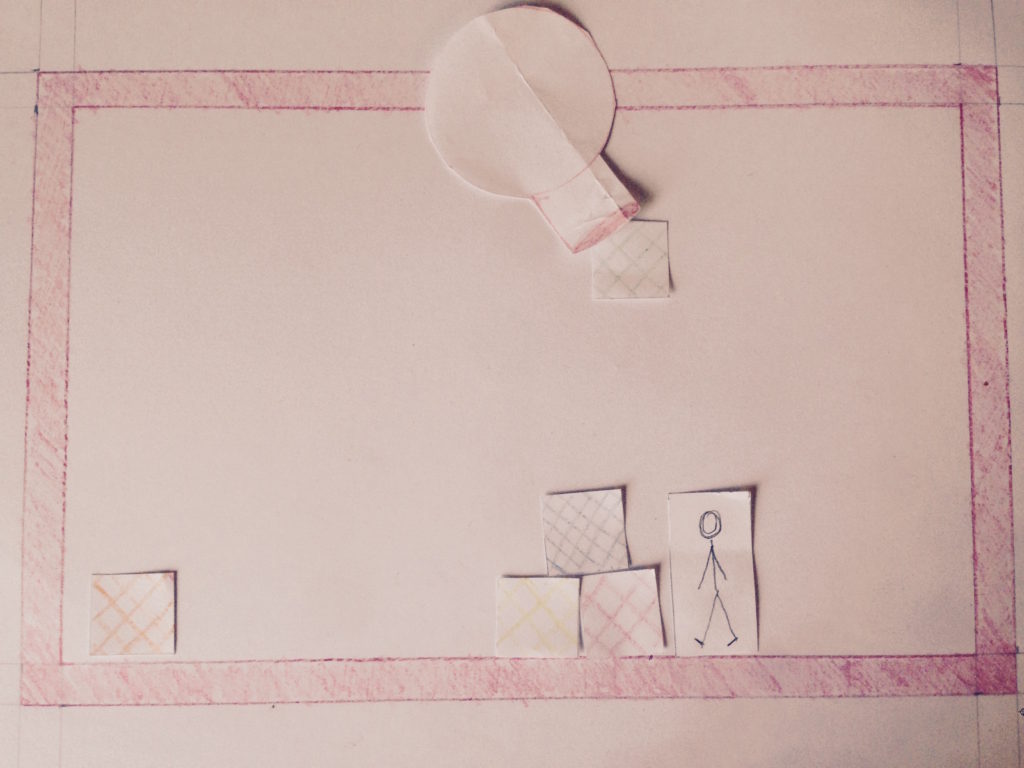With any game project, no matter how small, going from nothing to complete and playable game in one hit is rarely possible and also not desirable. Instead you should be aiming to develop your game in a series of successive prototyping phases. This enables you to regularly test your design and make incremental improvements.
In this short series I’ll demonstrate the principle on the development of a simple physics-based Christmas game with a working title of StackHack.
The design process began with a paper prototype:

A paper prototype is a very quick way of exploring game ideas. You start with a simple background drawn on a sheet of paper and draw and cut out other bits of paper to represent the characters and dynamic elements in the game. You can then play with the elements to explore different game concepts, adding, removing or tweaking elements to strengthen initial ideas. Paper prototypes are much quicker to produce than digital prototypes, so you can quickly explore ideas and discard those that don’t work before moving on to the digital prototyping stage.
My idea for this game is that it would be set in Santa’s workshop – in the warehouse where Christmas presents are stacked ready for Santa to collect and deliver them. Unfortunately something has gone horribly wrong and the automatic present stacking machine (represented by the circular cannon at the top of the image) is just throwing out presents at random. The player, as head elf (represented by the stick man), must collect the presents (represented by the coloured cross-hatched cubes), and stack them in a pattern shown by the holographic guides (represented by the squares with dotted lines).

To achieve this the player can either push or carry the blocks to the guides.

When the player reaches the guides, they drop the present on the guide and it locks into place. As you can see from the image above, the player can stand on presents – they also have a jumping ability.

When the stack is complete the player has won the level and can move on to the next, slightly harder level.

Of course the game will soon become tiresome if that was all there was to it, so later levels had to introduce some additional elements. The most obvious of these is the addition of platforms. This complicates life for the player in two ways. Firstly, presents that they might need will sometimes come to rest on platforms, and secondly, the guides might be on a platform. To reach these the player will have to use presents to create additional platforms or steps to allow them to access higher areas.
The next addition is that some guides will not just accept any present, they will only accept presents of a matching colour. The colours are not easy to see in this image but the top position in the guide pattern will only accept a green present.
The image above shows one of the advantages of paper prototyping in highlighting potential issues. Although this image is not to scale, you can see that there is insufficient room between the lower platform and the ground for the player to pass beneath it. This would mean that any presents that slid underneath that platform would be inaccessible. This doesn’t mean that the platform idea won’t work, it just means that I have to take care in the level design to have platforms that are high enough for the player to pass under, or low enough to prevent presents from sliding beneath them.
In the next part, I’ll describe the transition from the paper prototype to the first digital prototype.
Be First to Comment